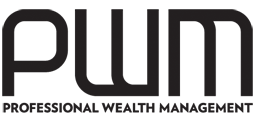
It is a tough market for exchange traded fund (ETF) providers, but one which has potential to grow considerably across Europe, where ETFs currently account for just 3 per cent of funds under management, compared for example with 8 per cent of funds under management in the US. If, as many believe, ETFs have the potential to take 10-12 per cent of any one market, the European market for ETFs could triple to $900bn (€692bn).
Not all recent entrants into the marketplace have achieved scale, however, and further consolidation is anticipated. Banking regulation is also putting paid to some operations, such as Credit Suisse, which is selling its $17.2bn (€13.4bn) ETF business to raise funds to strengthen its capital position.
Charges are a major differentiator in this market, with fierce competition driving them down. When Vanguard launched five ETFs in London in May, its strategy was to price each product at or lower than competitor’s prices. A similar entrée into the Canadian market last December resulted in a price war. Tim Huver, ETF product specialist at Vanguard, says investors are learning to focus on the total cost of ownership, including tracking error and bid/offer spread, rather than the simple management fee.
Vanguard’s UK debut consists of major building blocks such as FTSE 100, S&P 500, FTSE All World, FTSE EM and UK Government Bonds rather than niche funds. Although there is an abundance of products for investors to choose from, the major cashflows have been into these core vehicles, says Mr Huver.
Source, co-owned by a group of large investment banks including Goldman Sachs, JPMorgan, Morgan Stanley, Merrill Lynch and Nomura, is also keen to grow market share.
“We think we can capture 15 per cent plus of net new assets,” says Michael John Lytle, managing director. In 2011 Source was ranked third in collecting new assets in Europe and in 2012 is currently second after iShares. The market is highly concentrated, says Mr Lytle, with just 12 providers responsible for 40 funds which have net annual inflows of €100m.
Cost consciousness, market dynamics and regulation are all coming together to boost the ETF market. The difficult economic climate and the UK’s imminent Retail Distribution Review (RDR) are both focusing attention on charges, and it remains a challenging environment for active managers to outperform. The huge educational effort put in by manufacturers in recent years is also bearing fruit, particularly in Switzerland and Germany where providers have long been banging the drum.
The imperative of adding value in a challenging investment market has encouraged the private wealth segment to develop a more sophisticated blending approach. “We see much broader blending now – over a wider number of asset classes, not just a few core asset classes,” says David Gardner, managing director at iShares, which has conducted research into how asset managers are blending ETFs and active funds.
“The world has become more tactical since the crisis and wealth managers can make tactical bets using an index product cheaply and quickly. ETFs allow them to move from a risk-off to a risk-on position easily, and selling is straightforward in comparison with trading an active manager, where there is a tendency to buy into the manager emotionally.”
iShares’ survey found 25 per cent of wealth managers adopting indexing for tactical exposure and moving towards a comprehensive approach to blending.
“Index product flows have increased sharply since the financial crisis and RDR will help accelerate the pace of blending in the future, demonstrated by the massive curiosity private wealth respondents showed about the strategies of their peers,” says Mr Gardner.
“The next stage is a more refined conversation about how active and passive cohabit, moving on from the primarily barbell approach with highly active persistent alpha-generating managers on one side and passive funds on the other,” he adds.
“Traditionally, in portfolios adopting a ‘core/satellite’ model, the investor would perhaps hold bonds and equities in the core and use ETFs to take the satellite exposures,” says Manooj Mistry, head of db x-trackers UK at Deutsche Bank.
“Today, with such a wide range of exposures now available in ETF form, investors are increasingly using ETFs and ETCs (exchange traded commodities) for both the core and satellite parts. Because ETFs are so easy to trade, investors can tailor their portfolios easily, which means they could, for example, use ETFs to increase their exposure to certain sectors or regions.”
Investors are also learning to prefer ETFs over futures as a way to gain access to investment ideas very quickly without the rolling period in futures.
For future innovation, fixed income is the real area to look at, says Mr Gardner at iShares. It is still in its infancy but growing dramatically. For example, three Italian government bond funds launched by db x-trackers in June have taken in more than €200m. This demonstrates a search for yield as the zero coupon fund investing in bonds with a maturity of one year that yields 2.5 per cent has been most popular as an alternative to money market funds, many of which have closed to further subscriptions.







